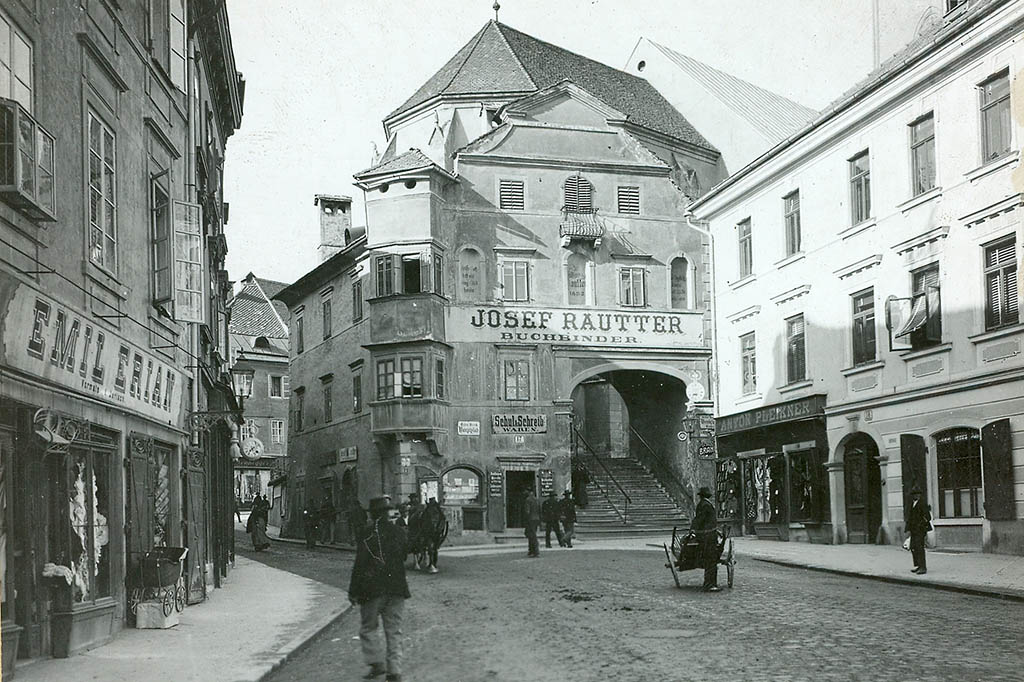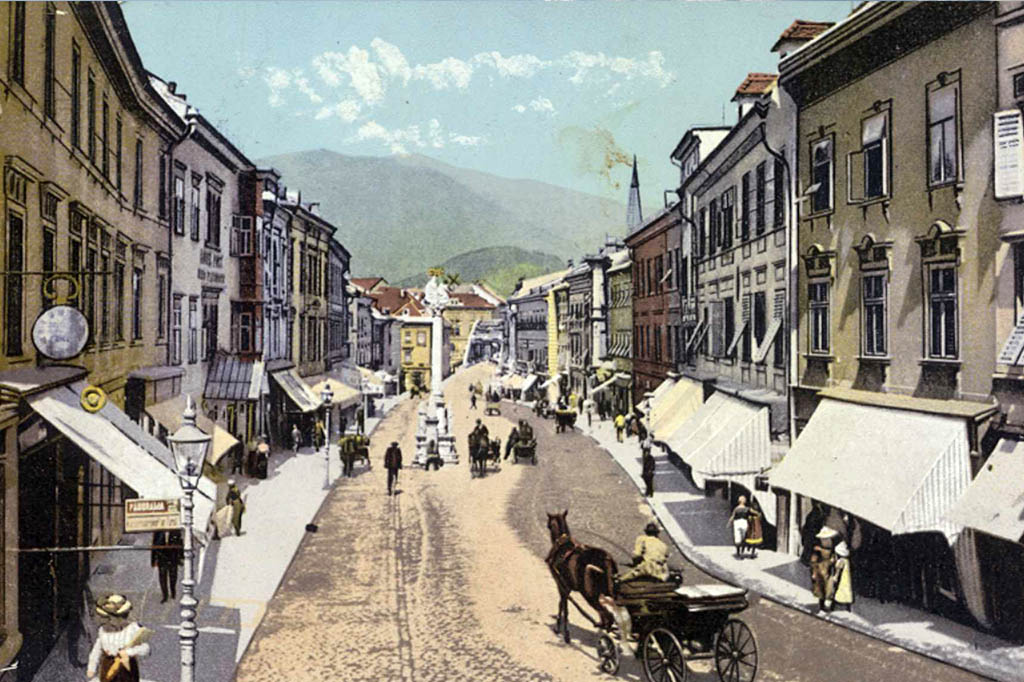Die ältesten menschlichen Spuren im Villacher Raum stammen aus der späten Jungsteinzeit (3500 – 1800 v. Chr.). Alle folgenden prähistorischen Epochen sind in diesem Raum mit teils sehr bedeutenden Fundstellen vertreten. Aus römischer Zeit (ab 15. v. Chr.) stammen viele Funde im ganzen Stadtgebiet. Der Name der hier vermuteten Straßenstation ist Santicum. Erst mit der Einwanderung slawischer Stämme um 600 hören die Reste der spätantiken Zivilisation auf zu bestehen.
Von 1007 bis 1759 war die Stadt Besitz des Bistums Bamberg. Villach wird 1240 erstmals ausdrücklich als Stadt bezeichnet; im Spätmittelalter war es die bedeutendste im Land. Das älteste überlieferte Stadtrecht stammt aus dem Jahr 1392.
1759 erwarb Kaiserin Maria Theresia durch Kauf Villach und alle anderen bambergischen Besitzungen in Kärnten für Österreich. Im Zweiten Weltkrieg wurde die Stadt 1944/45 durch 52 Luftangriffe schwer getroffen, etwa 300 Menschen kamen dabei um, 1300 Gebäude wurden vernichtet oder schwer beschädigt.
Nachdem bereits 1905 ein Teil der Gemeinde St. Martin zu Villach gekommen war, wurden 1973 Landskron, Fellach und Maria Gail eingemeindet. Das Stadtgebiet umfasst heute 134,85 km².
Zgodovina mesta
Najstarejši sledovi človeštva na območju Beljaka izvirajo iz pozne mlajše kamene dobe (3500-1800 pred Kristusom). Na tem prostoru so deloma zelo pomembna najdišča iz vseh naslednjih predzgodovinskih obdobij. Iz rimskih časov (od 15 pred Kristusom) pa izvirajo številne najdbe na celotnem mestnem območju. Ime tukajšnje domnevne rimske postaje je Santicum. Šele z naselitvijo slovanskih plemen leta 600 je prenehal obstoj ostankov poznoantične civilizacije.
Od 1007 do 1759 je bilo mesto v posesti škofije Bamberg. Beljak je bil prvič izrecno omenjen kot mesto leta 1240; v poznem srednjem veku je bil najpomembnejši v deželi. Najstarejša prenesena mestna pravica izvira iz leta 1392.
1759 je cesarica Marija Terezija z nakupom za Avstrijo pridobila Beljak in vse preostalo imetje bamberške škofije na Koroškem. V drugi svetovni vojni je bilo mesto v letih 1944/45 močno poškodovano v 52 zračnih napadih, približno 300 ljudi je v napadih umrlo, 1300 zgradb pa je bilo uničenih ali težko poškodovanih.
Potem ko se je že leta 1905 del občine Šmartin priključil k Beljaku, so bili 1973 priključeni še Vajškra, Bela in Marija na Zilji. Mestno območje danes obsega 134,85 kvadratnih kilometrov.
Town’s history
The oldest human traces in the Villach region date back to the late Neolithic. ( 3500- 1800 before Christ ). In this area there are partly some very important archeological sites from all the following prehistoric eras. Many artifacts from the Roman times have been discovered in the town and its vicinity, as it was near an important Roman road , leading from Italy. The name of the supposed town’s Roman station was Santicum. Only with the arrival of Slovan tribes in the year 600 the remains of the relicts from the late antique civilisation stopped.
From 1007 to 1759 the town was in the possession of Bamberg bishopric . Villach was in the records for the first time mentioned as a town in 1240; in the late mid ages it was the most important in the country. The oldest transfered city right stems from 1392.
In 1759 the Habsburg empress Maria Theresia formally puchased Villach and all the remaining Bambery territory . In the second world war the town was strongly damaged in the years 1944/45 in 52 air raids, about 300 people got killed, 1300 buildings were ruined or heavily damaged.
In 1905 a part of the municipal area St.Martin was incorporated to Villach, later in 1973 the town area was further enlarged through the incorporation of Landskron, Vellach and Maria Gail. The town area today consists of 134,85 square kilometers.



